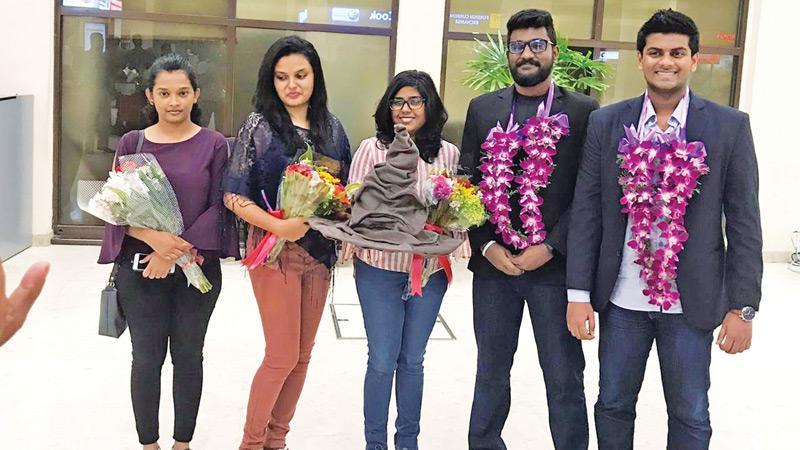
When a group of undergraduates from the Department of Computer Science, Faculty of Applied Sciences of the University of Sri Jayewardenepura, was tasked to come up with a human-robot interaction creation as a compulsory project, they chose two subjects they were passionate about- J. K. Rowling’s Harry Potter and helping kids with autism.
 The team breathed life into the Sorting Hat that plays a vital role in bringing Harry James Potter, Hermione Jean Granger, and Ronald Bilius Weasley together when it announced the trio belonged to the house Gryffindor when they arrived at witchcraft and wizadry school- Hogwarts.
The team breathed life into the Sorting Hat that plays a vital role in bringing Harry James Potter, Hermione Jean Granger, and Ronald Bilius Weasley together when it announced the trio belonged to the house Gryffindor when they arrived at witchcraft and wizadry school- Hogwarts.
The Sorting Hat went on to group a number of fans into four houses- Gryffindor, Ravenclaw, Slytherin, and Hufflepuff- when they flocked to the team’s stall when the hat was exhibited at “Innovate Sri Lanka-2019” which was held at the BMICH,. The Hat also became the global winner under the Hardware category at the International Conference on Social Robotics 2019 that was held in Madrid, Spain from 26 to 29 last month.
Two members of the core team which was supervised by the Director of Robotics and Intelligence Systems Laboratory (RIS) Dr. Ravindra de Silva and aided by Research Assistant Udaka Manawadu met the Sunday Observer to share their experience. Viraji Amarajeewa and Dovini Jayasinghe together with Adhisha Gammanpila, Asela Wijesinghe and Tehani Wanniarachchi are all diehard Harry Potter fans.
Viraji, a third-year student, tells us she watched the Harry Potter series over five times and still hasn’t given it a rest. Dovini, who is in her final year, has watched a few of the movies. Viraji shook her head slightlty in disapproval. Dovini will have to catch up on the rest of the series.
What does the Harry Potter universe mean to the two? The two lit up in excitement. “We love it,” they declared. So, when they were asked to come up with a novel creation, about eight months ago,it did not take long for them to arrive at a conclusion on what their robot should be based on. They decided to make use of the almost always grumpy Sorting Hat to extract natural emotions using brain waves to aid children with autism who find it hard to interact, express themselves and their emotions.
Viraji explained that the hat, which is a social robot, can help children with autism to interact and also express themselves. She added that it can also read brainwaves and this data can be effectively used for medical purposes.
The team had to tirelessly research about autism and understand how they can use robotics to help make an autistic child’s life better. Then they found that most robots that were created for this purpose had ‘typical features’. By this they meant the robots closely resembled a human and interacted with the child.
But the Sorting Hat is a fictional character which resembles a much-loved magical world and whoever who wears it becomes a part of that magical journey.
“It signals the user of external stimuli, and even help to detect if his or her mood,” we are told.
Dovini is sure that this will also help the wearer make new friends. After all, who wouldn’t want to hang out with the kid with the enchanted hat ?However, the project is still midways the team predicts that it will take around six more months for completion. The next step- the brainwave sensor integration and environment sound analysis are scheduled to be completed by 2020 January.
“We are also planning to feed the hat multiple languages to make it even more efficient,” Dovini says. “An autistic child will not be able to learn a new language in order to use the hat. Instead we want the hat to be able to communicate in the child’s language,” she adds. The team is also looking forward to publishing the research papers within the coming months.
The team is thankful to their senior lecturer Dr. Ravindra de Silva the supervisor of the project and all the lecturers at the Department of Computer Science and Statistics, the Innovation, Inventions and Venture Creations Council (IIVCC) and especially the Vice Chancellor, Prof. Sampath Amaratunge and the Dean of Faculty of Applied Sciences, Prof. LaleenKarunanayake for all the support and guidance extended towards making the project a success.
